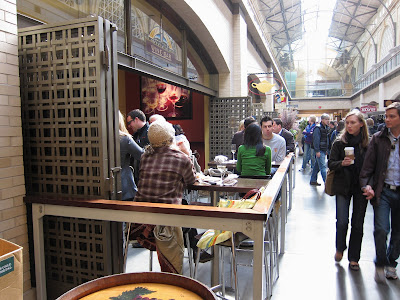A few days ago, I friend had me take the 100 places Travel Challenge List on Facebook. I scored 75, which probably means I can die in a few years, but I’d like to add subjective comments and add the places on my personal 100 places to see before you die list.
Here are the first 10. See you in a few days for 11-20.
1. The Alamo
Dude, only if you are Texan. Don’t get me wrong, it’s a nice place and San Antonio—especially the River Walk—is beautiful, but if you want to see missions for the history, you are much better off in California, and if you want to see historic Spanish colonial buildings, go to Mexico or south of it.
Lars’ tip: Walk to Rive Walk up on one side to the Alamo and back the other.
Lars’ alternatives:
· San Juan Capistrano just South of LA
· Sucre, Bolivia. Merida, Yucatan. Potosi, Bolivia. Or most other colonial towns in Central and South America
2. Alhambra
Most definitely—it’s probably the best example of Arab architecture in Europe. Unfortunately most tourist do it as a drive by. Spend a few hours to really experience the rooms and gardens.
If you have a chance walk back down through the old quarters of Grenada, preferably on the south side, and have a paella along the way. It’s wonderful.
3. Andros Island
Haven’t been
4. Angel Falls, Venezuela
Haven’t been
5. Angkor Wat
Worth it, although you won’t see much that you can’t see in Kamphaeng Phet or other Khmer temples in Thailand.
Lars’ tips:
· If you just want to see Ankor, take a flight from Bangkok. Otherwise, carry on to Phnom Penh for a look at Cambodia.
· If you are in Siam Reap, get the 2 or 3 day ticket and visit the outlying temples and spend more time at the main one. Also, there is some fascinating people watching since many holy men travel to Ankor.
 |
| From Thailand, Cambodia, and Laos |
· Spend an extra day to visit the floating villages on Tonie Sap Lake. It’s a really unique experience—you can skip the fish skin care massage to make time for it.
Lars’ alternative: If you are in Thailand and just want to see Khmer temples, pick one from www.khmer-temple.com
6. Atlantic City Boardwalk
Only if you get bored enough to go to Jersey
Lars’ alternatives:
· Las Vegas—more glitter, less drab, same amount of sand.
· All the old British seaside resorts like Hastings, Brighton, Easbourne
7. Ayers Rock
A must see. It’s hard to describe, but you’ll never see anything as ancient anywhere else.
Lars’ tips:
· Don’t drive, fly.
· If you have a few hours wait in Alice, take a taxi and wander the streets.
· Walk at least a quarter around the rock.
· Spend one sunrise or sunset at Kata Tjuta
8. Big Ben
Meh. You can only see it from the outside and it’s not really that special.
Lars’ tips:
· Take a picture, visit Westminster Abbey and go look at something interesting like the Tower, Tower Bridge, the HMS Belfast or even Buckingham Palace.
9. Bora Bora
Haven’t been
10. British Museum
Absolutely, it’s the place where 400 years of imperial loot went.
Lars’ tips
· Don’t try to do it in one day or on one trip, it’ll kill you. Pick a few exhibits and then go do something else.
· Walk the few feet to Cartwright Gardens for an amazing semi-circle of old London architecture and then, if you must, to the Brunswick shopping center for the WTF is this a grade II listed building?
Lars' alternatives:
- If you can't make it to the UK, the NYC Met is amazing and the Art Institute in Chicago is also not far off.













